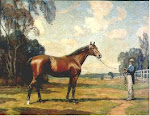 After hearing the author speak at the Library of Virginia, I had such high hopes for this book. It is an important work, as it's really the first complete chronicle of a disaster that shocked and shattered the citizenry of Richmond, Va. Baker has put together an excellent monograph that definitely fills a void, and she is to be commended for that. I have been interested in the Richmond Theater Fire for many years, have read articles and done some research of my own on the subject and have found it fascinating. But I was not totally satisfied with this effort. Not because the research is flawed; it definitely is not. Baker has pulled together an amazing array of resources and all things considered, has written an excellent monograph on the disaster. Perhaps it was the organization, or maybe it was the writing, or maybe it was just the mood I was in, but the narrative didn't hold my interest beyond a certain point and left me rather unsatisfied somehow.
After hearing the author speak at the Library of Virginia, I had such high hopes for this book. It is an important work, as it's really the first complete chronicle of a disaster that shocked and shattered the citizenry of Richmond, Va. Baker has put together an excellent monograph that definitely fills a void, and she is to be commended for that. I have been interested in the Richmond Theater Fire for many years, have read articles and done some research of my own on the subject and have found it fascinating. But I was not totally satisfied with this effort. Not because the research is flawed; it definitely is not. Baker has pulled together an amazing array of resources and all things considered, has written an excellent monograph on the disaster. Perhaps it was the organization, or maybe it was the writing, or maybe it was just the mood I was in, but the narrative didn't hold my interest beyond a certain point and left me rather unsatisfied somehow.On December 26, 1811, the Richmond Theater, filled with over 600 people including children, caught fire during a performance. Many important people, including the Governor, William Smith, politician Abraham Venable, Lucy Madison, a niece of James Madison, and others of all classes and colors were in attendance. Governor Smith and over 70 other people died, either in the conflagration or later from their injuries. It was a horrific tragedy and the worst disaster in America up to that time, and the city of Richmond was never the same afterwards, taking decades to heal.
The events leading up to and including the fire, and those immediately after the fire, I found most interesting and devoured those chapters. Her depiction of the fire itself was extremely fascinating in its sheer gruesomeness and horror: how the fire began backstage and was not immediately handled; how ladies were hampered by their clothing and folks who sat in the expensive boxes found themselves virtually trapped inside; how people perished from smoke inhalation; windows were shattered for people to jump through, many being caught by bystanders; how people fell to the floor and were trampled or overcome by smoke. Baker's survey of the theatergoers was well done: the personalities that she highlighted were intriguing and good choices--Caroline Homassel, the Girardin and Greenhow families, Gilbert Hunt, Sally Conyers and Lieut. James Gibbon, etc.--but I wish there had been even more about the people involved. Even though Baker claims the list of the dead has expanded over the years and is continuing to be added to, I think it was a poor decision not to include in the volume at least the known list of those who died in the fire as engraved on the monument dedicated soon after the disaster. I wish she had done even more concerning the characters involved, was there not enough information? I would have preferred she expanded her text on the various characters and included more of them, their lives and personal dramas, as that was what I was most interested in. I needed more than what the author offered here.
I enjoyed the book thoroughly through about the first four chapters, found them very readable and informative, but after that I simply lost interest. The later chapters were full of good information and details concerning the local fire department, sermons preached against theater-going, the drive to build Monumental Church in honor of the dead, and so on, but I simply found that I was not that interested in a lot of that.
I have always enjoyed nonfiction works that read like fiction. Maybe that's my problem, that I really wanted to read more of a novelistic account of this awesome disaster.When compared with other nonfiction books on disasters like Walter Lord's A Night to Remember or The Johnstown Flood by David McCullough, this book's narrative was just not as compelling throughout nor did I feel the same sense of impending doom as with those books. However, that being said, I would certainly recommend it for anyone who prefers good solid nonfiction with a more academic bent and has an interest in historical disasters.
